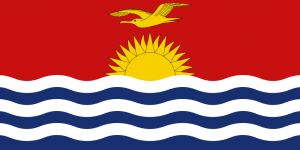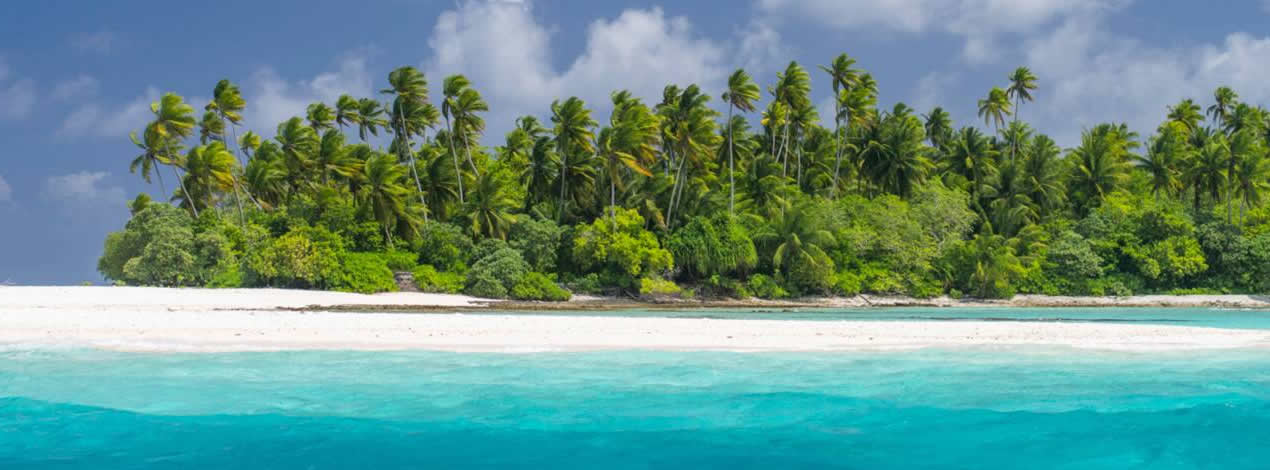Language/Gilbertese/Culture/Kiribati-Timeline
Kiribati Timeline[edit | edit source]
The islands that make up Kiribati have been inhabited for at least 2000 years before present time, arguably more. The Austronesian population which constitutes the main part of the inhabitants in contemporary times remained in episodic contact with the navigators of Fiji, Samoa and Tonga, before the Western explorers began to visit the archipelagos which compose it, rather late. Having become a protectorate and then a British colony, described as the “Cinderella of the Empire”, once their phosphate mining resources were exhausted, the Kiribati became independent under their current name in July 1979.
Before colonization[edit | edit source]
Inhabited for about two thousand years, perhaps more 1 by an Austronesian people, speaking one and the same language, the Gilbertese, with the auto- ethnonym I-Tungaru 2, in episodic contact with Fijians, Tongans and Samoans, Kiribati have been "discovered" rather late by European explorers and comprehensively only at the beginning of the XIXth century. These islands had been occupied for at least two thousand years, probably much more, by an Oceanian population, bearer of a civilizationLate Lapita and which undoubtedly came from the southeast of the Solomons or the north of Vanuatu. From the start of their occupation, the Gilbertins had to face difficult geographical conditions (they were only atolls, low islands, relatively dry) and, like the inhabitants of the Carolinas and the Marshall Islands, developed very specific and elaborate navigation techniques. (outrigger canoe, astronomy). They remain in contact, at least episodically, with their immediate neighbors. They develop original forms of parliamentary democracy like the one that was still in force inTabiteuea (litt. Leaders are taboo) at the beginning of xx th century 4 and in contact with local chiefdoms Europeans but in the north of Gilbert. During the very first circumnavigation, Fernand de Magellan's crew crosses the Unfortunate Islands : in all likelihood, it is one of the three Southern Line Islands, Millennium Island, Vostok, even Flint. Antonio Pigafetta baptizes it "isola de 'tiburoni" (in Italian), Shark Island, as the crew can fish for sharks in abundance. On the other hand, they only see birds and trees, in an island that they describe as uninhabited. The Millennium Island (former Carolina) was discovered again in 1606 and named San Bernardo by Queiros who left Peru.
Beginning of colonization[edit | edit source]
Armor and helm, Gilbert Islands, late 1800s, woven coconut fiber, skin of fish of the genus Diodon ("hedgehog fish"). Fairbanks Museum and Planetarium, St. Johnsbury, Vermont, USA. The islands owe their current name of Gilbert Islands (in French), to Admiral Jean Adam de Krusenstern (a German-Baltic, in the service of the Tsar) who baptized them around 1820 after Captain Thomas Gilbert, a Briton who had crossed in 1788, together with Captain John Marshall, during their return between Botany Bay (later Sydney) and Canton. But it was Captain Louis Isidore Duperrey who was the first to represent the sixteen Gilbert atolls as a single archipelago - on a map of1820, shortly before the imposing hydrographic publication of Krusenstern. They were the subject of the American exploration expedition in 1841 (that of Charles Wilkes) but were visited only by his second officer, Lieutenant (Navy) Hudson, on the USS Peacock and the Flying Fish and were marked by the massacre. of Tabiteuea with destruction of an important mwaneaba. Hydrographic surveys are however of good quality (those of Tarawa will be used again in 1943). They are then visited, irregularly, by whalers, explorers, Blackbirdersand Beachcombers and, on occasion subject to work more or less forced into plantations or South American mines with a demographic impact. Robert Louis Stevenson visited them for a few months in 1889 (see In the South Seas). The missionaries, first Protestants - came from Hawaii in 1857 (American Board of Commissioners for Foreign Missions) or Samoa (London Missionary Society, 1877) - then Catholics in 1888 (Missionaries of the Sacred Heart), evangelize the two archipelagos and write down their two vernacular languages to translate the Bible.
British colonization[edit | edit source]
In 1892, the United Kingdom placed under protectorate the sixteen Gilbert Islands and the eight Ellice Islands. The Union Islands (now Tokelau) were also part of it from 1916 to 1925 (and formally, until 1948). They become a British colony on January 12, 1916, also comprising Ocean (Banaba), Fanning and Washington Islands (since 1901) - as well as Christmas Island (from 1919). In 1971, the colony of Gilbert and Ellice Islands obtained full internal autonomy, which had started in 1963. The Gilbert Islands suffered (in part) from Japanese occupation (at the end of 1941, the Battle of Tarawa ended it in November 1943 while Ocean Islandwhere was the capital of the colony, remains occupied until August 1945) and are the object of American-British nuclear experiments (32 explosions on Christmas between 1957 and 1962). The anticipated depletion of the phosphate deposits on Ocean Island, the colony's main wealth, precipitated the march towards independence. The British Phosphate Commissioners (BPC), a predominantly British consortium, has exploited the phosphate wealth by selling it, cheaply, to Australian and New Zealand farmers. Longest civil trial in British legal history between residents of Banabato the British government and the BPC: the inhabitants evacuated to Rabi (Fiji) ultimately obtained 25 million Australian dollars in 1981.
Independence[edit | edit source]
In 1978, independence was granted to the Ellice Islands, separated from the Gilbert since October 1975 and which then took the name of Tuvalu ("eight [islands] together"), followed by Kiribati, the12 juillet 1979, 90 years old, to the day, after the arrival of Stevenson. Kiribati is only the spelling, in Gilbertese, of the English Gilberts - where the letters g, l, and s are not part of the alphabet and the syllables are open: so it is not a new name, just a transcription of the old name 5. the20 septembre 1979, the United States abandoned all its claims on the sparsely populated lands it claimed of the Phoenix Islands and the Line Islands which therefore remained attached to Kiribati, by signing a treaty (ratified on 23 september 1983) with the new republic. During the first 40 years of independence, the republic enjoyed democratic political life and eventually became a member of the United Nations in 1999. The democratic reversal Teburoro Tito, president reelected for a 3th and final term, resulted in the election of the opponent Anote Tong in 2003 against his brother Harry Tong, easily re-elected in 2007 and 2012.
Source[edit | edit source]
- https://fr.wikipedia.org/
- https://www.petitfute.com/
- https://wikimonde.com/article/Histoire_des_Kiribati


